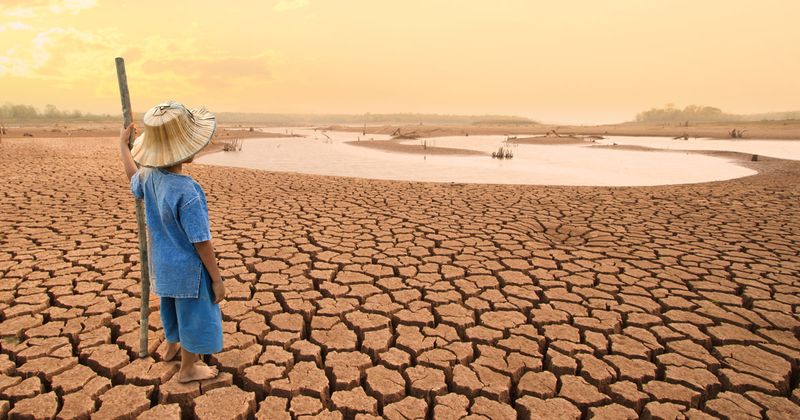Climate change directly, indirectly impacts allergy, asthma outcomes
Climate change can affect the frequency and severity of asthma and allergies, especially among vulnerable populations, according to an article published in The Journal of Allergy and Clinical Immunology.
“This article is an update for allergists and immunologists about the health impacts of climate change, already evident in our daily practices. It is also a call to action and advocacy, including integrating climate change related mitigation, education and adaptation measures to protect our patients and avert further injury to our planet,” Susan E. Pacheco, MD, professor of pediatrics at The University of Texas Health Science Center at Houston Medical School and pediatric immunologist/allergist at Children's Memorial Hermann Hospital and Memorial Hermann-Texas Medical Center, and colleagues wrote.

Observed changes
According to the authors, carbon dioxide concentrations in the atmosphere have increased by 48% since the start of the Industrial Revolution, from an average of 280 ppm to more than 415 ppm, increasing global average surface temperatures by about 1°C.
These higher temperatures and greater CO2 concentrations have modified pollen season durations, pollen release times, the amount of pollen produced, and pollen composition and allergenicity, the authors wrote. Also, rainfall changes and hurricanes could expand pollen species’ reach into the atmosphere to different regions, potentially sensitizing susceptible populations in remote areas.
Various aeroallergens have seen increased production due to climate change, the authors continued, while changes to the flowering season stand to extend allergenic seasons as well. Plus, long-term warming changes will modify plant habitat and species density patterns, moving gradually northward and southward in the Northern and Southern Hemispheres, respectively, increasing pollen allergy risks.
Impact on allergy, asthma
The authors noted that air pollution also impacts allergies and asthma, adding that previous studies have described air pollution’s role in allergic disease and asthma development, as well as in exacerbations and mortality. In fact, climate-driven changes increase air pollution sources and promote a feed-forward loop between pollution and poor air quality resulting from climate change.
Air pollution also has been associated specifically with increased prevalence of atopic dermatitis (AD) as it has adverse effects on skin barrier integrity through the generation of reactive oxygen species and epigenetic modifications of the immune system. Subsequently, these mechanisms can even predispose infants to AD development, increasing risks for future allergic disease via the atopic march.
Further, increased methylation of the FOXP3 immunoregulatory gene secondary to air pollution exposure has been associated with an increased risk for asthma diagnosis at age 7 years and asthma severity.
Additionally, the authors cited how the prevalence of pollen-related allergic respiratory diseases such as rhinitis and asthma has increased. Compared to rural areas, urban areas have seen increased frequencies of pollen-induced respiratory allergies in correlation with vehicular emissions, urbanization and westernized lifestyles.
Seasonal asthma exacerbations in children and adults have been associated with many allergenic pollen species, the authors continued, while increased frequencies and intensities of floods and cyclones will drive fungal spore production, which is a powerful trigger of asthma and rhinitis.
Thunderstorms during pollen season have induced severe asthma attacks and even deaths in pollen-allergic patients. Other events related to climate change impact allergy and asthma as well. For example, exposure to wildfire smoke has been linked to asthma-related ED visits, hospitalizations and premature deaths, while similar significant associations have been found between exposure to Saharan dust and hospital admissions due to asthma.
When indoor environments experience increases in moisture and dampness due to storms and flooding, house dust mites and molds increase.
Disadvantaged populations
Although climate change is taking place around the globe, it has a varied impact for the world’s diverse populations, according to Pacheco and colleagues.
“Although all humans are affected by climate change, the impact of the climate crisis affects people in different ways,” the authors wrote.
Disadvantaged populations — including those living in poverty or developing countries, communities of color, indigenous groups, racial and ethnic minorities, vulnerable occupational groups and migrants — will experience the worst effects of climate change due to their exposure and limited adaptive capacity, the authors wrote.
The authors also wrote that older adults, pregnant women, children, people with disabilities and those with chronic medical conditions including immunodeficiency are at the highest risk for sensitivity to exposures to climate change. Individuals with underlying asthma are at greater risk for hospitalization and mortality as well.
Because most people are not aware of these links between climate change and health, the authors wrote, health care providers have a unique opportunity to educate governments, the public and their patients and promote equitable climate solutions and health policies to reduce risks that climate change has posed on deteriorating public health.
“This is our opportunity to change the history of humanity,” Pacheco and colleagues wrote.

